Hypersonix U.S. patent issued for SPARTAN scramjet
Hypersonix has been awarded a U.S. patent for technology used in the company’s SPARTAN scramjet design.
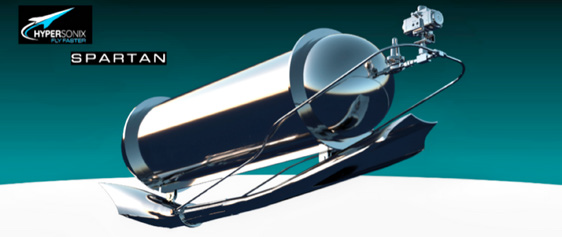
U.S. Patent Number US11639700B2 protects, for close to 20 years, some key features of an “Airframe integrated scramjet with fixed geometry and shape transition for hypersonic operation over a large Mach number range.”
The air breathing and self-igniting scramjet engine invented by one of Hypersonix’s co-founders, Michael Smart, is able to accelerate between Mach 5 and Mach 12, depending on the selection of materials and manufacturing process chosen. This patent grows Hypersonix’s portfolio of patents to three, the other two being Australian innovation patents. Other features will also be covered as work progresses on the firm’s family of Unmanned Aerial Vehicles (UAVs).
Hypersonix’s design is fueled by hydrogen, which has a higher ISP than other fuels used in Aerospace, such as RP1 Kerosene. Clean burning hydrogen allows the engine to switch on and off several times during the flight, enabling a non- ballistic trajectory that cannot be achieved with conventional rockets, and also offers a longer range than other scramjets.
SPARTAN’s fixed geometry is another unique feature which lends itself to rapid, advanced, manufacturing techniques.
The first SPARTAN prototype was 3D printed in high temperature alloy material in December of 2021 as part of an Accelerating Commercialisation Australia (ACA) grant awarded to Hypersonix.
Hypersonix also recently announced the completion of a manufacturing demonstrator using ceramic matrix composite (CMC) material for the SPARTAN engine that will allow the engine to withstand the higher temperatures expected at its top speed of Mach 12.
High cadence flight and reusability are important aspects of the Hypersonix strategy. Hydrogen
fuel is making this a reality as it burns cleanly, unlike other fuels such as Kerosene that leave residue, making it difficult to reuse quickly if at all. While reusability is not a priority for other scramjet- powered hypersonic systems, it is a cornerstone of the Hypersonix product strategy.
Hypersonix’s ambition is to provide commercial solutions to the market for access to space and high-speed travel. Along the way Hypersonix has capitalized on the significant interest shown by Defence circles for the DART AE demonstrator flight vehicle in providing an advanced hypersonic test platform for collecting valuable data at hypersonic speeds.
Thanks to the SPARTAN design and the advanced manufacturing techniques and materials it uses,
Hypersonix was selected for the Hypersonic & High-Cadence Airborne Test (HyCAT) program, a solicitation by the Defense Innovation Unit in the U.S., part of the U.S. Department of Defense (DoD) to deliver the DART AE flight vehicle.
While working with Australian Defence as the first customer for Hypersonix, the company will pursue their commercial vision to apply their scramjet technology to develop a low cost and high cadence access to space solution for smallsats using green hydrogen, and in the longer term a hyperliner that may transport cargo and passengers from Sydney to New York City in just a few hours.
“We are grateful for the DIU’s confidence in Hypersonix as our first customer so early in our history. Many technologies have found their first success in the Defence market before getting applied in the commercial world. And if there is one way for Hypersonix to grow the team faster in the current environment, the answer has to be to provide US Defence with unique capabilities.” — David Waterhouse, Managing Director, Hypersonix
”We are thrilled to have our original ideas recognised by a US patent for our SPARTAN scramjet design. Our team has already integrated my inventions and fresh ideas into various additional features that cement our technological leadership in hypersonic propulsion and flight.” — Michael Smart, Co-Founder, Hypersonic
IAI’s newgen AESA/SAR reconnaissance system
IAI has released their ELM-2060PES, a new generation AESA SAR/GMTI Pod for fighter aircraft.

This new systems was developed by IAI’s defense systems subsidiary, ELTA Systems Ltd.
The ELM-2060PES builds on the legacy of the combat proven ELM-2060P system, in service for decades with Air Forces worldwide.
The ELM-2060PES Pod is a self- contained, Active Electronically Scanned Array (AESA) Airborne Radar System, providing state-of- the-art Synthetic Aperture Radar (SAR) and Ground Moving Target Indication (GMTI) capabilities.
Those capabilities include: Bi- directional Line-of-Sight (LOS) wide band Datalink that is Interconnected with a Ground Datalink and Exploitation Station (GES).
The airborne system is housed within a fully autonomous, detachable centerline pod that mirrors the aerodynamic envelope of certified Fighter Aircraft fuel tanks and is operated by aircraft avionics or via the Datalink from the Ground Station.
The ELM-2060PES produces radar images that approach photographic quality, for Operative Reconnaissance, Surveillance of Time Critical Targets (TCT),
Precision Strike support and Battle Damage Assessment (BDA), and operates as a true, day and night sensor capable of penetrating clouds, rain, smoke, fog and smog.
The ELM-2060PES has advanced radar modes for High Resolution Target Classification and precision Geo-location against fixed and moving Ground Targets, providing the operational users with quality actionable intelligence.
The ELM-2060PES extended-range and ultra-wide swath capabilities provide real time, all-weather and visibility, stand-off reconnaissance and surveillance mission capabilities, while operating in most challenging scenarios.
“ELTA’s new AESA SAR/GMTI system delivers powerful, real-time reconnaissance capabilities by incorporating our latest technological developments, including full AESA and unique processing techniques. The high-quality data of this system enables interpretation and extraction of critical Image Intelligence essential for operating in the modern battlefield.” — Yoav Turgeman, President, ELTA, and Executive VP, IAI
Innoflight officially announces CyberDog™ Space Cybersecurity Suite
Initially funded under Small Business Innovation Research (SBIR) government contracts to cyber-harden advanced sensor payloads, Innoflight is officially announcing the CyberDog™ Space Cybersecurity Suite and offering it with the company’s family of secure space networking and processing products.

These products include the Compact Flight Computer (CFC) family and derivative products for advanced high-performance Mission Networking Electronics (MNE) and Mission Processing Electronics (MPE) — CyberDog™ will be included in CFC/MNE/MPE reference designs starting this year.
CyberDog™ offers “security-in- depth” rooted in the NIST SP 800-53 RMF (Risk Management Framework) controls and leverages Innoflight experience with High Assurance (HA) systems and National Security Agency (NSA) space crypto certifications. More recently to address the Department of Defense (DoD) Zero Trust Reference Architecture (ZT-RA), prepared by the Defense Information Systems Agency (DISA) and the NSA Zero Trust Engineering Team, CyberDog™ addresses all seven Zero Trust Pillars.
Some of the applicable CyberDog™ components include: TBU (Trusted Boot and Update); NMS (Network Monitoring Service); and DMS (Device Monitoring Service).
These services are specific to the functions/applications running on the flight computer and are integrated currently through the CyberDog™ Trusted Linux Platform (TLP) or Trusted Xen Platform (TXP).
The CFC-400X has flown on multiple LEO and GEO missions and is awarded on multiple MEO and lunar missions. The CFC-400X provides on-orbit re- programmability, high-performance networking and processing to demonstrate advanced capabilities, like: on-orbit autonomy, secure space mesh networking, edge processing for sensor data, and Rendezvous, Proximity and Docking (RPOD) operations.
The CFC-400X can be bundled with multiple networking personalities to support line- rate Ethernet switching, IPv4 routing and/or Multi-Protocol Label Switching (MPLS) routing. Combined with customer- supplied software and gateware, the CFC-400X can provide a full networking stack for dynamically networking satellites to fixed ground, mobile ground, airborne and other space assets.
Providing CyberDog™ into these avionics provides a “secure networking processing core” to address cyber resiliency into networking and data routing subsystem and edge-processing payloads, such as an on- orbit Battle Management Command, Control & Communications (BMC3) module, both of which Innoflight is providing for the Space Development Agency (SDA) Proliferated Warfighter Space Architecture (PWSA) Tranche 1 Transport Layer (T1TL).
A key feature of CyberDog™ is its expandability and flexibility, supporting integration with third- party cyber security solutions, which for example might specialize in the data layer protection or Network Intrusion Detection/ Protection Systems (NIDS/NIPS).
In addition, CyberDog™ can be integrated with virtualized or containerized environments. As a Space Cybersecurity Suite of
design solutions, CyberDog™ will be included and/or offered with all of Innoflight’s avionics and will be available for third-party avionics.
“More than 15 years ago, Innoflight was committed to bringing modern networking and security to space links, and now that capability is very much needed in space. Over the last five years, our focus has been defense-in-depth to those links all the way through to the core processors that generate the C4I that goes over these links.”
— Jeff Janicik, Founder and CEO, Innoflight.
L3Harris awarded hypersonic missiles detection/tracking contract by SSC
The U.S. Space Force Space Systems Command (SSC), through the Space Enterprise Consortium (SpEC) Other Transaction Authority (OTA) vehicle, has awarded L3Harris Technologies (NYSE:LHX) approximately $29 million for a sensor payload design contract to deliver a digital model for the MEO – Missile Track Custody (MTC) Epoch 1 program that will support the detection and tracking of hypersonic missiles.
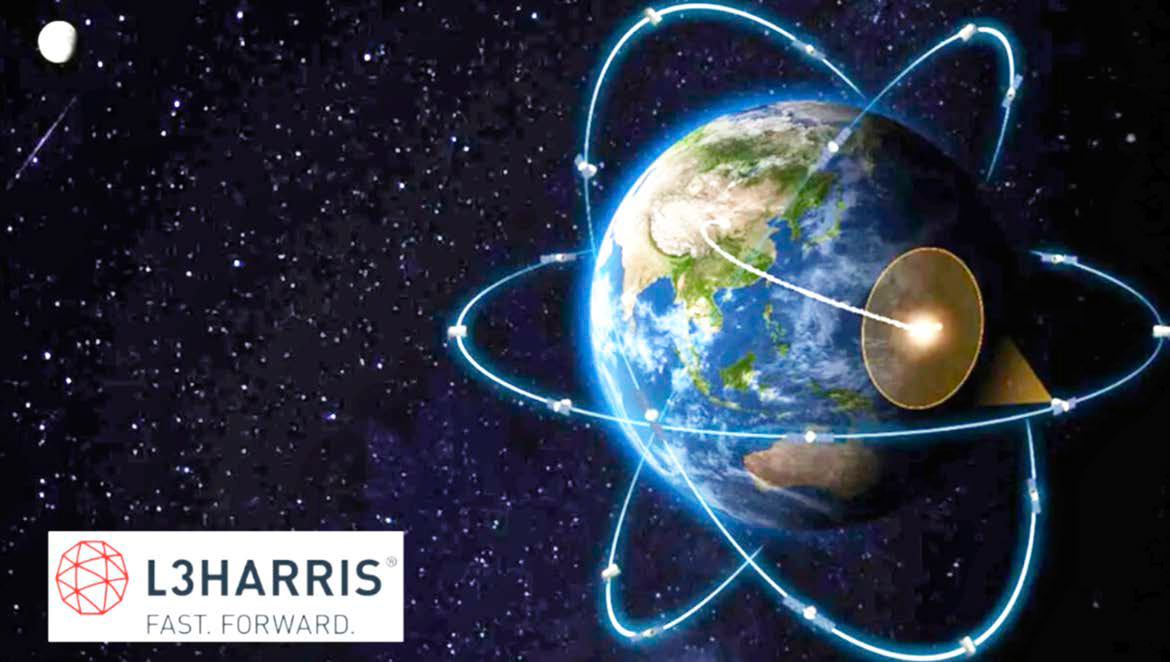
To inform the Space Force’s future missile warning and tracking constellation, L3Harris will conduct an infrared sensor payload critical design phase that will support realistic cost, schedule and performance predictions.
The L3Harris MEO-MTC contract will conclude its critical design review phase in May 2024. The work will be performed at the company’s Fort Wayne, Indiana, and Melbourne, Florida, facilities.
“L3Harris is proud to be an integral part of the Space Force Space Systems Command’s Missile Track Custody program, which will provide groundbreaking missile warning and tracking capabilities that are at the forefront of our national defense. We are committed to leveraging our extensive work within our nation’s integrated missile defense architecture to provide resilient, low-risk and affordable solutions for both Epoch 1 and future Epochs.”
— Ed Zoiss, President, Space and Airborne Systems, L3Harris
“I’m very excited the next generation of Space Force missile tracking satellites will be built right here in Fort Wayne. These satellites are crucial to defending our homeland and a great example of the groundbreaking innovation going on in Northeast Indiana. As a member of the House Armed Services Committee, I’m proud to have helped secure this investment that will support hundreds of high-paying jobs in our region.”
— Congressman Jim Banks, who represents Indiana’s 3rd Congressional District where L3Harris’ Fort Wayne facility is located.
Lockheed Martin’s NexGen Interceptor Program
Lockheed Martin has entered into three, Mentor-Protégé Program agreements for their Next Generation Interceptor Program, to strengthen the defense industrial base — this is part of the Department of Defense (DoD) Mentor-Protégé Program, which encourages prime contractors to serve as mentors in developing the technical and business capabilities of small businesses.

Through the program, the Missile Defense Agency awarded Lockheed Martin three contracts that will run up to two years.
Lockheed Martin will work with Marotta Controls, Space Information Labs (SIL), and Valley Tech Systems (VTS) to support the maturation of advanced engineering and technology capabilities, such as model-based engineering and the digital thread. Being a part of the program provides them with insights about how to grow their businesses.
“The Mentor-Protégé Program allows us to reduce barriers for small businesses; when small business wins, we all win. Lockheed Martin believes in the strength of this program, so we are mentoring three different companies and supporting them throughout our NGI development.”
— Sarah Reeves, Vice President, NGI, at Lockheed Martin
Marotta Controls is a family-owned small business specializing in sub-systems for the aerospace and defense sectors, based in Montville, New Jersey.
“Marotta Controls is privileged to join Lockheed Martin’s Mentor- Protégé Program. As a small business, Marotta Controls understands the importance of support from the premiere defense contractor. We look forward to our continued growth as an agile partner delivering on our mission to support the warfighter and our nation’s defense.”
— PatrickMarotta, President and CEO, Marotta Controls
SIL is a woman-owned small business that designs, manufactures, and environmentally qualifies Li-Ion Intelli-Pack® Batteries, AFTU and Space Based Range flight units for multi aerospace platforms, based in Santa Maria, California.
“SIL is honored to be selected by Lockheed Martin through the Mentor-Protégé Program to increase our capability to produce and deliver various critical technologies for national security programs.” — Edmund Burke, SIL President & Founder
VTS, powered by Voyager Space, is a small business specializing in aerospace propulsion, based in Folsom, California, and Reno, Nevada. “Valley Tech Systems is excited to be selected by Lockheed Martin as a protégé under the DoD Mentor Protégé Program. Lockheed Martin’s mentorship will add depth and robustness to our engineering, manufacturing, supply chain and mission assurance processes— enabling VTS to accelerate the application of our advanced controllable solid propulsion technology to enhance homeland defense and protect our warfighters.”
— Phil Csik, VTS Program Manager
Lockheed Martin is working with these businesses already as subcontractors to develop, mature, and field hardware in support of the NGI program from advanced technologies cultivated through the DoD’s Small Business Innovation Research (SBIR) and Small Business Technology Transfer (STTR) Programs.
NGI will be part of the current Ground-based Midcourse Defense (GMD) Weapon System, which protects the U.S. homeland against intercontinental ballistic missile threats from rogue nations.
Lockheed Martin’s NGI program has assembled a strategic, agile, and innovative team, including small businesses, to provide MDA with this critical, national security capability.
Lockheed Martin to collaborate with U.S. Army to improve space-enabled defense systems
Lockheed Martin has signed a Cooperative Research and Development Agreement (CRADA) with the U.S. Army Combat Capabilities Development Command’s Aviation and Missile Center (AvMC) to advance Beyond Line of Sight (BLOS) connectivity.
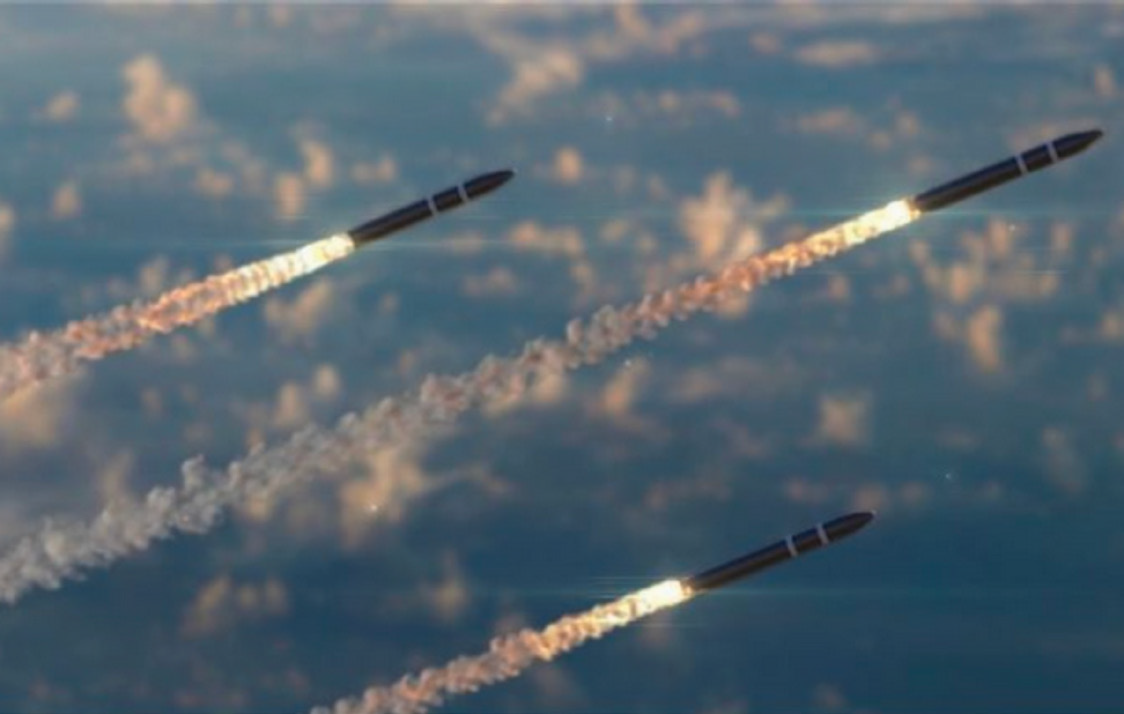
Under this CRADA, Lockheed Martin and AvMC will jointly develop and demonstrate space- enabled defense systems.
Through this CRADA, Lockheed Martin and the U.S. Army will conduct design, development, integration, and test risk reduction activities using AvMC’s Redstone Arsenal, Alabama-based, System Integration Lab (SIL) to identify and develop concepts of operations for linking ground-based platforms to the space domain.
The team will investigate capabilities that improve satellite communications (SATCOM) to defense systems, identify overlapping capabilities that can facilitate connectivity, look for capability gaps, conduct hardware-in-the-loop tests, test the connectivity between platforms at various speeds, explore ancillary use of communications systems and more.
As work begins, the team will leverage the SIL for its integration, test and analysis tools to support evolving prototypes.
The SIL’s advanced modeling and simulation tool suite will enable the team to accelerate the delivery of experimental prototypes and align technical performers across government agencies and industry.
“Lockheed Martin brings a legacy of experience in supporting our tactical warfighters, and we recognize the importance of providing them with next generation capabilities. Our collaboration with AvMC will assist in developing a more effective, survivable and affordable battlefield-connected 21st century security technology for our government customers and international allies by connecting platforms with space assets, helping deter future threats.”
— John Schierling, Lockheed Martin director for Tactical Space Programs
Northrop Grumman’s new airborne GPS nav system achieves successful flight test
Northrop Grumman Corporation (NYSE: NOC) has conducted a successful flight test of the company’s advanced airborne navigation solution, Embedded Global Positioning System (GPS) / Inertial Navigation System (INS) Modernization, known as EGI-M.
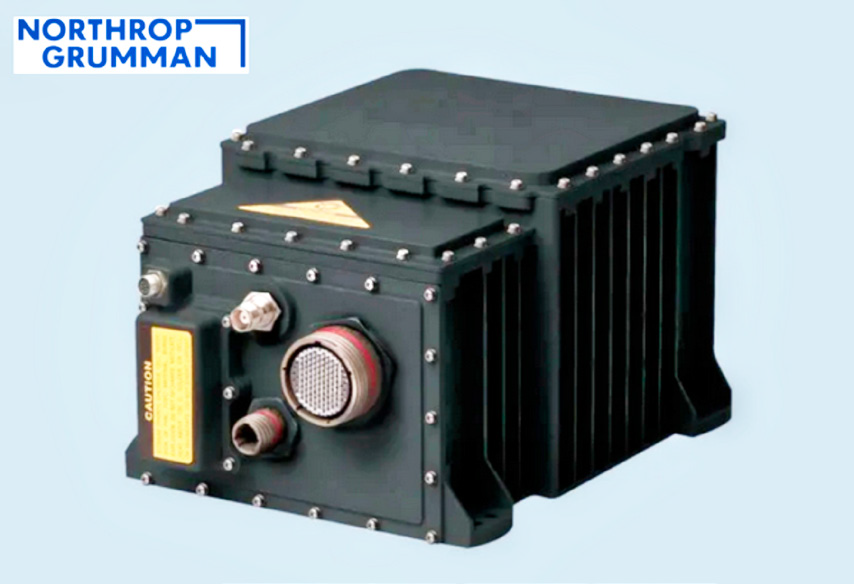
This is the first time that EGI-M, equipped with an M-Code capable receiver, has been tested in flight.
M-Code technology enables missions to be conducted in GPS- contested and GPS-denied environments.
The M-Code capable GPS receiver is a core component of Northrop Grumman’s EGI-M program, engineered to quickly transmit positioning, navigation and timing (PNT) information.
The fully operational EGI-M system will feature a modular platform interface, designed to easily integrate with current platform navigation systems, supporting advanced software and hardware technology upgrades now and in the future.

Pictured: Left—Northrop Grumman’s E2D Advanced Hawkeye |
Right—Lockheed Martin’s F-22 Raptor.
Testing occurred in May aboard a testbed aircraft. Flight test data confirmed that Northrop Grumman’s prototype EGI-M solution, the M-Code capable LN-351, performed at standards equal to the current LN-251 INS / GPS system, featuring modern fiber optic gyro technology.
Critical design review (CDR) for EGI-M was completed in 2020. Launch platforms for Northrop Grumman’s EGI-M are the E-2D Advanced Hawkeye and the F-22 Raptor. Additional fixed-wing and rotary-wing platforms across Department of Defense and allied forces have selected Northrop Grumman’s EGI-M as their future navigation solution to support mission-critical systems.
“This flight test is a major step forward in developing our next generation airborne navigation system. The EGI-M capability developed by Northrop Grumman enables our warfighters to navigate accurately and precisely through hostile and contested environments.”
— Ryan Arrington, Vice President, navigation and cockpit systems, Northrop Grumman
U.S. DoD awards million$$$ to SES Space & Defense
Under the single Blanket Purchase Agreement (BPA), SES Space & Defense, in partnership with other companies, will provide highly-secure, Global, X-band SATCOM services to U.S. Department of Defense (DoD).
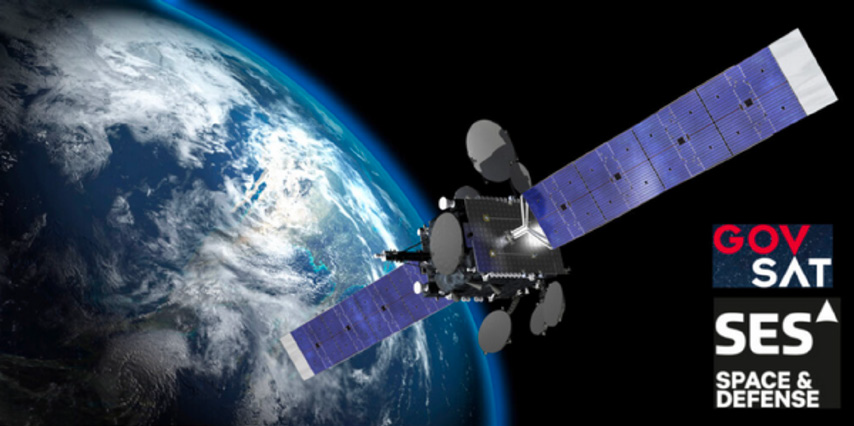
DRS Global Enterprise Solutions (GES), acquired and now part of SES’s wholly- owned subsidiary SES Space
& Defense, has been awarded a five-year, X-Band, Blanket Purchase Agreement (BPA) with an estimated value of $134 million in support of the U.S. Department of Defense (DoD).
The single award BPA was awarded through Defense Information Systems Agency’s (DISA) Defense Information Technology Contracting Organization (DITCO) by the U.S. Space Force (USSF).
To deliver a near-global solution, SES Space & Defense has partnered with several industry- leading players, including integrators, SATCOM and teleport operators.
Together, the contracted satellite operators will deliver Global X-Band satellite capacity, teleport and network services over a highly secure global terrestrial network, and other ancillary services to meet enduring and emerging DoD requirements.
To provide secure satellite communications service, SES Space & Defense will leverage the multi-mission GovSat-1 satellite, which features high-power X-band and Military Ka-band beams. GovSat-1 is a satellite operated by GovSat and is entirely dedicated to government and military missions.
The Global X-Band BPA is the first integration services agreement awarded to SES Space & Defense since the acquisition of DRS GES by SES was finalized in August of 2022.
SES Space & Defense is dedicated to delivering the most trusted end-to-end global communications through a fully integrated Information and Communications Technology Ecosystem to the U.S. government and military.
“SES Space & Defense believes the BPA is one of the foundation blocks in accelerating MILSATCOM- COMSATCOM integration for the space enterprise. The US Space Force established this contract as a mechanism to enable access to commercial X-band capacity globally for the DoD. We have partnered with industry-leading, X-Band owners and operators as we understand the demand for secure, non-preemptible, mission-assured capacity for critical operations. By combining satellite capacity, SATCOM services can achieve the highest availability with redundant X-Band coverage and diverse gateway connectivity within sovereign space.”
— David Fields, President and CEO, SES Space & Defense
U.S. Ambassador to Japan visits the QZSS-HP site
The Japanese Quasi-Zenith Satellite System (QZSS) is sparking interest across the space enterprise.
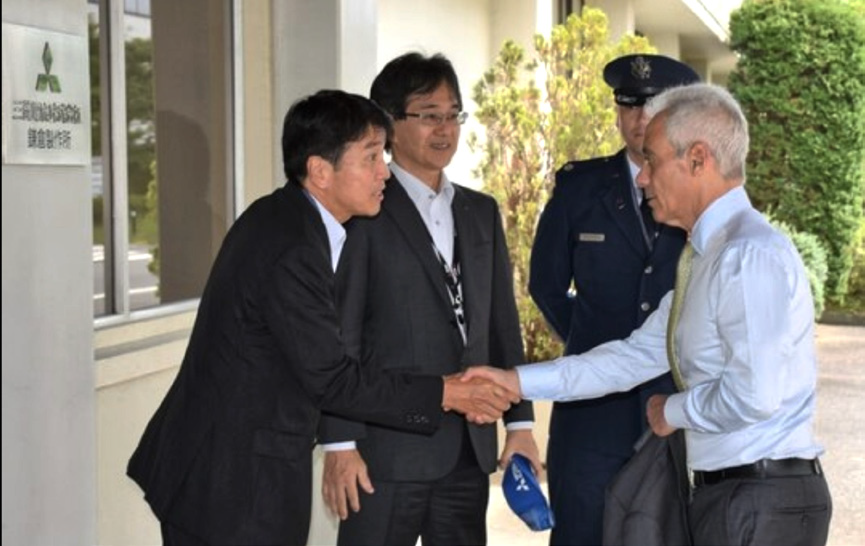 U.S. Ambassador to Japan, Rahm Emanuel, greets Mr. Yasuyuki Kasai, director general, Japanese National Space Policy Secretariat, Cabinet Office, Mr. Tomonori Sato, group president, Defense & Space Systems, Mitsubishi Electric Corporation, and Lt. Col. Brian Fredrickson, Quasi-Zenith Satellite System Hosted Payload (QZSS-HP) program manager, Space Systems Command, during a site visit to QZSS-HP in Japan. Photo is rovided by the Government of JapanMs. Asako Ueno, executive director, Quasi-Zenith Satellite System, Japanese National Space Policy Secretariat, Cabinet Office, briefs U.S. Ambassador to Japan, Rahm Emanuel, regarding the status of the Quasi-Zenith Satellite System Hosted Payload program, a pathfinding national security space cooperation initiative between the U.S. and Japan. Photo Credit: Provided by Government of Japan
U.S. Ambassador to Japan, Rahm Emanuel, greets Mr. Yasuyuki Kasai, director general, Japanese National Space Policy Secretariat, Cabinet Office, Mr. Tomonori Sato, group president, Defense & Space Systems, Mitsubishi Electric Corporation, and Lt. Col. Brian Fredrickson, Quasi-Zenith Satellite System Hosted Payload (QZSS-HP) program manager, Space Systems Command, during a site visit to QZSS-HP in Japan. Photo is rovided by the Government of JapanMs. Asako Ueno, executive director, Quasi-Zenith Satellite System, Japanese National Space Policy Secretariat, Cabinet Office, briefs U.S. Ambassador to Japan, Rahm Emanuel, regarding the status of the Quasi-Zenith Satellite System Hosted Payload program, a pathfinding national security space cooperation initiative between the U.S. and Japan. Photo Credit: Provided by Government of Japan
Rahm Emanuel, the U.S. Ambassador to Japan, recently visited the Kamakura, Japan site of the Quasi-Zenith Satellite System Hosted Payload (QZSS- HP), the unique pathfinding national security space cooperation initiative between the United States and Japan.
He met June 20 with Mr. Yasuyuki Kasai, director general, Japanese National Space Policy Secretariat (NSPS), Cabinet Office (CAO); Ms. Asako Ueno, executive director, QZSS Strategy Office (QZSO), NSPS, CAO; Mr. Nozomu Takaki, technical advisor, QZSO, NSPS, CAO; Mr. Tomonori Sato, group president, Defense & Space Systems, Mitsubishi Electric Corporation; and Lt. Col. Brian Fredrickson, QZSS-HP program manager for Space Systems Command (SSC).
Space Systems Command recently delivered two sensor payloads to be integrated into two, new, Japanese QZSS satellites that will be launched on a Japanese- developed launch vehicle as part of the U.S. Space Force (USSF)- Japan mission.
“International partnerships are important to the United States because that’s where our strength lies,” said F Schnell, director of acquisition, SSC Space Domain Awareness Delta.
He continued, “It lies in the U.S. and partner nations sharing the full brunt of accomplishing tasks and missions, and having diversity of thought, capabilities, and requirements.
Additionally, allied participation allows us to defray costs, incorporate different perspectives and different capabilities.
It also makes our adversaries have to look at situations differently. That is truly the benefit of having allied, like-minded partners coming together and saying, ‘This is what’s best for our mutual defense and assurance.’”
The visit took place at Mitsubishi Electric Kamakura Works where the first payload was integrated with the first host satellite, QZS-6, followed by a briefing on the mission.
“We greatly appreciate Mitsubishi Electric Corporation hosting director general Kasai and Ambassador Emanuel,” Fredrickson said. “Space Systems Command, the U.S. Space Force and NSPS are pleased to showcase QZSS-HP’s contribution to the broader U.S.-Japan Alliance as it extends to the space domain.”


